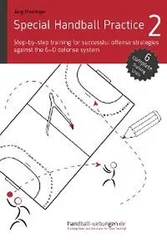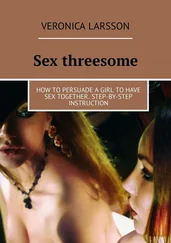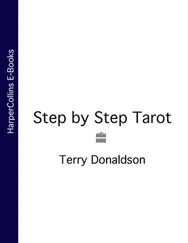153, Sur la mapo.
212, La vojo.
325, La orelo.
329, Kvarteto. 388, Malsekajn.
427, Aŭstralio.
473, Ĝi okazas nur en Decembro.
485, Ok: ĉiu sidis sur la propra vosto.
491, Truon.
595, Ĉe malpaco inter viro kaj edzino estas kulpoj ambaŭflanke.
691, 5+9=14.
696, Ili estas egalpezaj.
703(d), Ok.
719, El ripo. Unua.
816, Neniom: en aŭtuno ĉiuj forfalas. La dua: ĝia meza rapido estis po 45 mejloj: la meza rapido de la unua estis po 40.
824, 28 tagoj. Neniam! La ŝipo leviĝis kun la tajdo.
843.
Li (=P) estis kun sia amiko kaj ties kuzo
Li (=P) estis kun lia amiko kaj ties kuzo
Li (=P) estis kun sia amik(in)o kaj sia kuzo
Li (=P) estis kun sia amik(in)o kaj lia kuzo
Li (=P) estis kun lia amik(in)o kaj lia kuzo
Li (=P) estis kun lia amik(in)o kaj lia kuzo
Jen 10 signifoj. Ripetu ĉion kun “kuzino”; 20 signifoj. Ripetu la 20 kun “Tiu” (=J) “estis …”: 40 signifoj (Se he signifus trian personon, nek P nek J, la frazo povus havi 168 signifojn!)
898, Ne pruntedonu ilin.
901, Ŝu-najlo.
908, La alumeton.
909, Ambaŭ estas samdistancaj.
940, Unu knabo prenu la teleron kun la ovo.
1022, La litero M.
1030, 6p.
1031, 21 funtoj. 82. 24. ¼p. Ĉe la unua drinkejo.
1032, 5¼p.
1033, 2ŝ 6p. Mi mem devus pagi 5ŝ pro mia duono de la vojaĝo: la kosto de la alia duono devus dividiĝi inter ni.
1039, 18.
1040, Jim-Flora, Albert-Mary, Tom-Roza.
1161, La ĝusta ekvacio estas 27−2=25.
Two Prepositions Together
1192. (a) Two prepositions may come together. E.g., Li rigardis al ŝi de post( from behind ) la ĵurnalo. Ne forprenu la kusenon de sub( from underneath ) mi. Ili pereos de sur( from the face of ) la tero. Li prenis el interili Simeonon. Li sidas en ŝuldoj ĝis superla oreloj. Similarly: de antaŭ, de apud, de el, je ĉirkaŭ,etc.
(b) Do not join the two words. I.e., do NOT write depost, elsub, ĝissuper, denun.
(c) For since , either deor postalone is usually the best translation. Mi ne vidis vin de tiam (de kiam vi edziĝis) (post via edziĝo).We sometimes find de post(two words). Redonu tiun elspezon de post tiu tago, kiam… But this is not advisable, because de posttiam logically means: “starting (not from then, but) from some subsequent time” . Better forms are: detempe de, ek de. Detempe de(or Ek de) mia juneco … from my youth up .
1193. These suffixes are sometimes used tentatively. They are not official, and should be used, if at all, only in scientific or technical works.
1194. ‑IV, which can, is able to (active) (=kiu povas, ‑pova, ‑kapabla) . Paroliva (parolpova), which has the power to speak; bruliva, combustible; kondukiveco, conductivity . Cp. sentiva( sentipova), sentient, which has the power to feel, with sentema, apt to feel , and sentebla, which can be felt . (But instrua libro,not instruiva).
1195. -OZ, containing, full of, ‑ous (= -hava, ‑plena, ‑riĉa, kun-a ). Poroza, porhava, porous; feroza, argiloza, kalkoza. Ŝtonoza (ŝtonplena) kampo, a field full of stones . Cp. ŝtoneca, of a stony nature . Usually -a (ŝtona)is sufficient. In any case, ozshould be used only in a material sense ( glora, ĝoĵa,not gloroza, ĝojoza).
1196. -IZ(A. -ize , Fr. -iser , G. -isieren ), denotes technical application.
(1) Of a substance or object. (a) = Provizi per ‑oj: dentizi buŝon, plumizi sagon, ringizi barelon.(b) = Plenigi (fill, impregnate) per ‑o, ‑ozigi: fumizi ĉambron (haringon), kalkizi grundon, sukerizi paston.(c) = Kovri per ‑o: gluizi paperon, orizo( gilt ). But in everyday non-technical conversation use the simple form: buteri panon, kalki muron, olei salaton, pipri (sali) supon, sukeri teon.(d) = Meti sub la influon do ‑o: elektrizi, hipnotizi, radiizi.
(2) Of a process named after its author: farad-(galvan‑ makadam‑ pasteŭr‑)izi.
1197. Certain other affixes are in use in various branches of science. (E.g., in chemistry, mono‑, di‑, tetra‑, penta‑, seskvi‑, hiper, hipo‑, ‑at, ‑it, ‑oz, ‑ik;in botany, -ac, ‑en;in music, -ol;in medicine, -it…). These are outside the scope of this book.
In preparation for a higher examination, you should acquire a fluent international style and master the vocabulary. To this end study diligently the best literature; especially Zamenhof’s speeches and translations, and above all La Malnova Testamento. Copy out phrases worth remembering or imitating. Learn by heart passages of outstanding beauty.
Zamenhof’s Lingvaj Respondoj, the Fundamenta Krestomatio, Fabeloj de Andersen, and a good dictionary should be familiar friends. (Plena Vortaro de Esperanto or Plena Ilustrita Vortaro are standards, coupled with a modern Esperanto-English dictionary.) The average magazine article is not a safe guide to style. Nor is every printed book! Your authorities should be the Fundamento, the Lingva Komitato, the example of the best writers, and your own critical common sense, in this order. The indiscriminate acceptance of every proposed new word or fashion is a mark of the tyro. The artist is shown not by the number of paints in his box, but by the way he uses them.
Live mentally in Esperanto-land. Think in Esperanto. Write your note-books, your diary, your accounts, in Esperanto. Practise conversation with yourself — not necessarily aloud! Ask yourself questions and answer them. Describe to yourself what you see as you walk along the street. Translate mentally the Sunday sermon, the shop advertisement, the newspaper article. If no Esperantist Mend is available, make one. Practise on the baby, the cat, the dog. Make speeches to the looking-glass. (Incidentally, this is a cure for the “blues”.)
If you make a regular and sustained effort — and if you have enough humility and uncommon sense to learn the language as it is, instead of guessing what it might be, and to refrain from suggesting improvements till you have learned it (and discover that the points you once criticized in your ignorance are just those which stamp Esperanto as the creation of a genius) — then your progress will be speedy and certain.
Take every opportunity of hearing and speaking the language. In the Group meeting join those more advanced than yourself, avoiding the hangers-on who, by persistently talking English, never get beyond “Bonan tagon! How are you?”, and waste your time as well as their own. If possible, attend an Esperanto Congress, and converse by preference with those who do not know English. You will soon find yourself talking Esperanto easily and naturally.
Читать дальше












